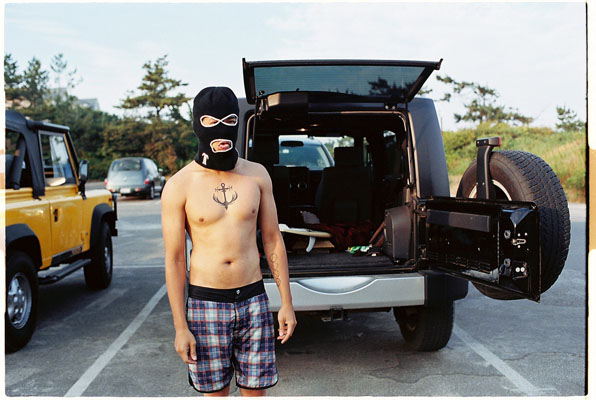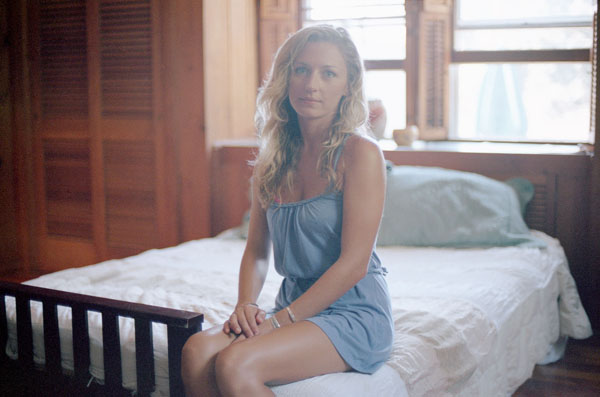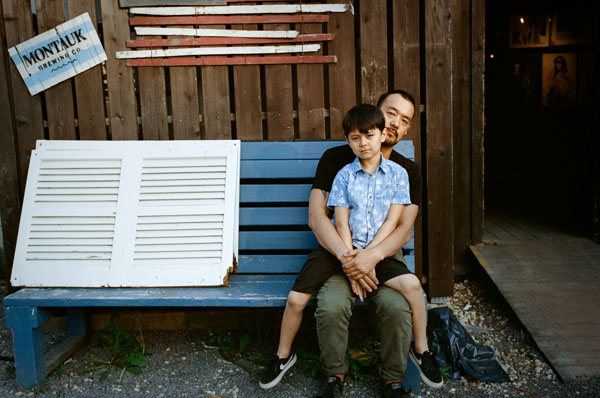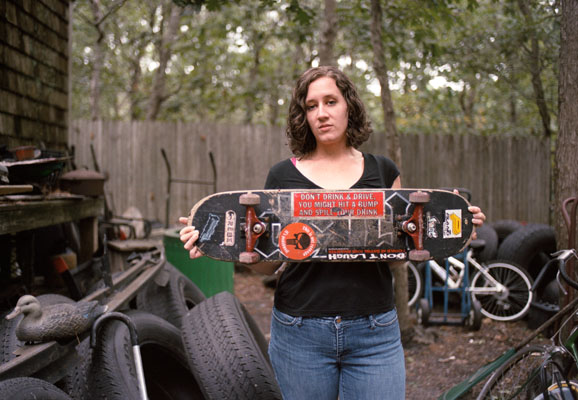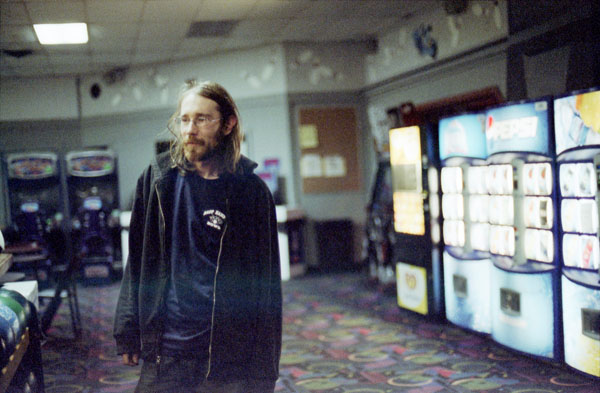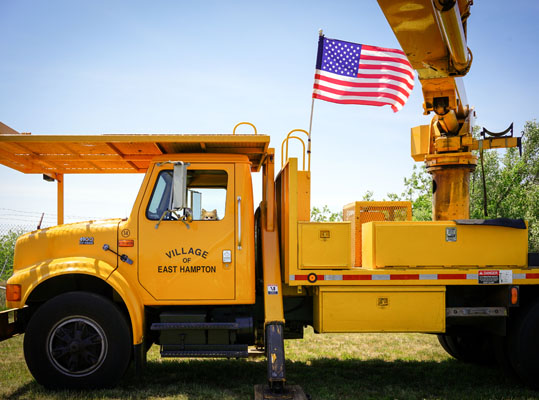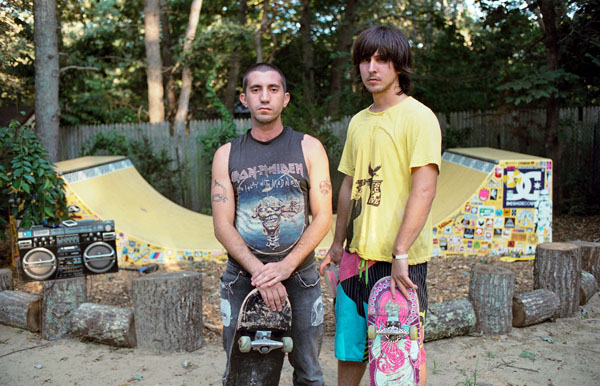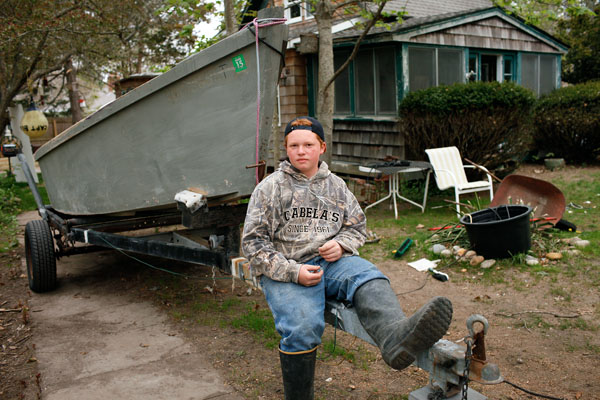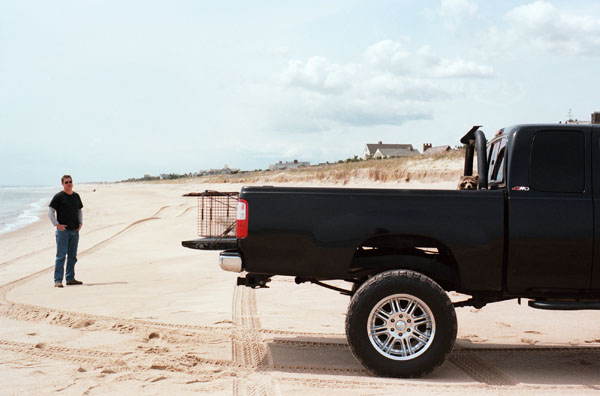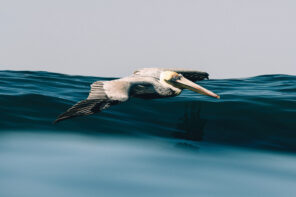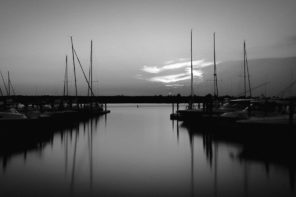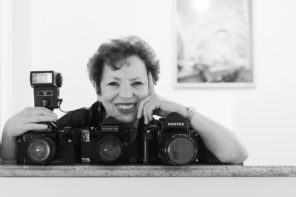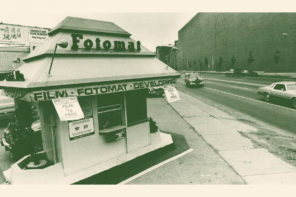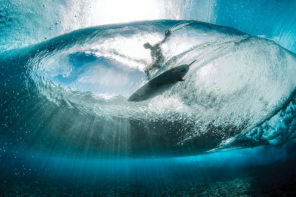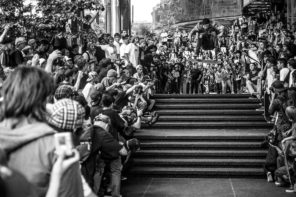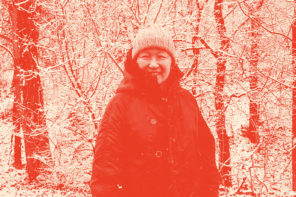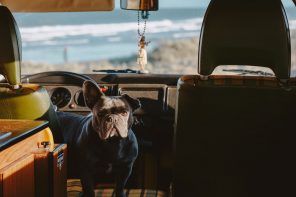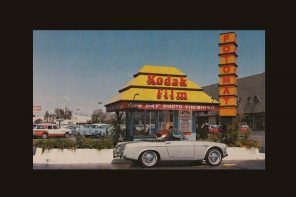Tara Israel is a storyteller. She’s a polished photojournalist, an accomplished editor, a fervent supporter of Make Work-Related Phone Calls Great Again™…but beneath all the paint, she’s a human that just wants to tell stories. Good stories. Stories worth telling as much as they are worth hearing. Case in point: her Bonac Series.
Tara’s photographic series works wonderfully to visually convey the lives of generations of fisherman and community members in her native East Hampton—from longtime local bartenders to the 13 year old kid skipping school to fish commercially (on a boat he bought with his own money).
This past week, amid Tara preparing to leave town for her latest story in Appalachia, I had the opportunity to line up an interview with the anecdotalist and dive a bit more into the storyteller herself + one of the finer, homegrown portrayals of the East Hampton community in recent years.
So after a 57-minute call and maybe 84 texts, we’ve finally got you on the record. Let’s get into it—where are you originally from and how’d you first get into photography?
I’m straight outta East Hampton. Springs, specifically. I’m a bit of a hobo-homebody; I’ve “moved” away for college/jobs/travel a few times, but never fully quit the town, and it still is my home base. I’m originally from where I stand now.
My mom is an acoustical engineer, and my dad a doctor, so I’m not from the most artistic family, but there were always cameras around. My dad loved sports photography, and both grandfathers insisted taking awkward family photos every time we gathered.
My main camera is a 35mm Nikon, identical to the ones both my parents had in the 80s, which hangs from the strap I inherited from my mom. I took photography as a student at Sarah Lawrence, just so I could study with Joel Sternfeld. I actually had envisioned a career in academia until my junior year, when what I was doing in my photo class gained some press and attention from folks in the arts. What started as a distraction from writing papers on funerary practices in ancient Egypt or interviewing sex workers on the theme of intimacy inadvertently grew into more than just a hobby.
Was there a distinct moment or occasion that inspired you to start seriously capturing the local community of East Hampton?
I started taking portraits of friends whenever I came home from school. I talk about East Hampton to anyone who will listen, but it was interesting to see the response to my work from those with no knowledge of the region aside from being a summer community or a visual reference. My professor joked that there was no way I was photographing “the Hamptons.” I responded that he was right—the photos were not of the Hamptons. It was East Hampton. It’s a bit of a parallel-universe thing.
At the time there wasn’t a body of work I could point to that I felt reflected an accurate portrayal of the community that I knew. Everything was either done by an outsider or in the context of the summer community. Just like how not everyone in Appalachia works in the coal industry; not all locals should be defined in an “us vs. them” manner regarding people from out of town. Every life is unique so its also not fair to claim that one person or one experience is the authoritative voice. I’m slowly just working through an old yellow pages finding people to let me photograph them.
I call the project Bonac, local speak for East Hampton, so viewers can digest the work (I hope) without the triggering preconceptions that follow such a loaded word as “Hamptons.” This ain’t the Hamptons; this is Bonac, bub. Believe it or not, people lived here before P. Diddy’s “white parties” or Montauk became a branded lifestyle.
How open were people to being photographed?
It took work. Most people who have attempted this have done so with a reductionist approach that is often inaccurate and unflattering. I started blogging about my work to let people see I didn’t have any agenda other than capturing my subjects in a way they would recognize as truthful. I tried to be certain not to flatten the narrative by putting everyone in the same box. To that end, I prefer to shoot people at their homes; it shows a diversity of experiences in the community, where each set of circumstances is just as valid (and interesting) as the next.
I probably would sell more work if I shot more nudity or people smoking doobs on the beach, but that isn’t a direction I am interested in pursuing for this project.
Bonac is a semi-autobiographical portrait of a small town. It is a cross-section of the community closest to me, because it truly took a village to raise this child. I live here, so I don’t have any choice but to be accountable for my actions. I’m not some journalist helicoptering in, claiming to be an expert on the nuances of a place after a few days of research on Wikipedia and arbitrarily soliciting subjects at a bar or gas station.
There hasn’t been a parade in my honor for being the greatest photographer of all time, but I would like to think if I was to get a Yelp review it would say I at least made an effort to not exploit my people people or take advantage of their hospitality. I probably would sell more work if I shot more nudity or people smoking doobs on the beach, but that isn’t a direction I am interested in pursuing for this project.
And how much time did you spend shooting the series? Was it on-and-off, or did you set it up to regularly have shoots in motion?
A few months into starting the portraits that inspired Bonac, a journalist at the New York Times approached me about doing a feature on the work. It was 2010 and I told her that I was still too green and wasn’t ready for the press just yet. She responded: “Well, get ready, then—we want to run the story in two months.” It was summer break; I was working in my mom’s office at the time, so I went into turbo production mode.
I was doing three shoots every day: before work, on my lunch break and after work. I’d drop off my film at CVS and pick it up to review on my way to my next shoot a few hours later. I would often show the portraits to my subjects pointing out my mistakes, like: the focus was soft, or it wasn’t framed properly…I think people appreciated my transparency, even my clumsily learning on the job, and it became a team effort, as they patiently allowed me to basically learn how to use a camera.
I still make heaps of technical errors, but keeping up such an intense shooting schedule was crucial to making sure I was slightly more prepared for the press that really launched a photo career that I previously never considered. Not everyone has been thrilled with the photos, usually for vanity reasons, but the beauty of working on this project for so many years is I have the ability to reshoot some people; others have grown to love the photos.
I always tell people: “You are only going to get older, more tired-looking and a little squishier in the mid-section with time. Trust the process.” In 10 years you aren’t going to remember the insecurities that once plagued you. I’m horribly camera shy so on the rare occasion I am in front of the camera I have to remind myself of my own advice.
Of all the Bonac Series shots, which one do you consider your favorite?
Every person, every landscape. All of them. I struggled with severe bouts of agoraphobia in my twenties, so the fact I’ve been able to push through that to shoot alone is a personal victory. It is also incredible how many people have invited me into their homes and entrusted me with access to their lives. I often shoot people I haven’t seen since elementary school so I now have a memento from each opportunity to reconnect to my past or go on adventures I may otherwise never have had. One photo comes to mind…I took it while sitting in the bow of the Lester crew’s dory they use fishing striped bass at the ocean.
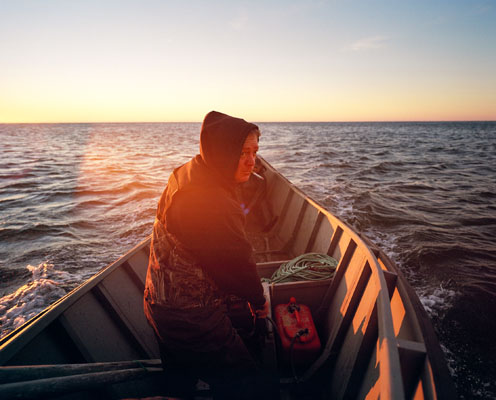
Paul and Jimmy in the dory. Amagansett, NY. Photo: Tara Israel
The practice was called “haul seining” after the seine nets, before the state made them to switch to gill nets. They basically back a truck up really fast and slam the brakes at the break to launch the boat into the ocean; then they set a long net into a semi-circle, one end connected to the launch truck, the other end to another truck with a winch after the dory makes a large loop. A few hours later they bring in the net, removing the fish by hand. Everyone has taken photos from the shore while this happens because its really beautiful to watch these guys fishing exactly how their families have for generations. Only two guys are in the dory, one steering and the other letting out the net from the back. The others wait on the shore.
One morning I noticed the guy who does the net was shoveling sand out of the bow; he said it was to counterbalance his weight in the stern. I’ve been shooting these guys for years so I asked if they would be willing to forgo some of the sand to let me actually get into the boat to shoot. Dawn was just breaking but I somehow managed to get a single shot on my beloved Mamiya 7 which is nearly impossible to focus in the dark.
That’s just one of many instances where being 5’2″ has been to my benefit. I’m the only person for the job; not because I’m the most talented photographer, but rather because I’m typically the only one who can fit into a small space and stay out of the way. “Human sandbag” is included on my resume. (Please don’t let that autocorrect to human scumbag or I’m writing a letter to the editor, buddy.)
Fisherman and baymen can be pretty elusive when they need to be. Was there anyone that got away, that you would’ve liked to photograph and have featured in the series?
There have been a few characters that I would have loved to photograph or have passed away before I was able to meet them. But most of them have also been photographed by others before me, like Doug Kuntz, and photographed beautifully. The community of baymen is pretty small and the boats they use are even smaller. There really are just so many shots you can take before you are taking photographs identical to what someone has done before. I’ve been photographing some of these guys for seven years now throughout the seasons so when I do go out with them it becomes a challenge to make sure I’m not ripping myself off.
What’s more interesting to me is to see how the guys I’ve been following have changed over the years. Who is or is not fishing this season? Whats trends are people following in oil pants (rubber overalls) fashions this year? Who has bottle rockets on their boat this year and will they finally manage to hit someone on another boat in the caboose while riding out to the traps this week? How many times will I be reminded of the countless embarrassing things I’ve done on the many many hours spent curled up inside a tote under a pile of slickers because morning sun is unforgiving as are the winter winds of scallop season? Not as unforgiving as editing photos all night only to realize that your intended subject was photobombed by someone in the distance mooning the camera.
They have all been very generous with their time and hooked my family up with fish throughout the year. I’m willing to take the hazing if it comes with a sack of assorted fish caught that morning.
Who has bottle rockets on their boat this year and will they finally manage to hit someone on another boat in the caboose while riding out to the traps this week?
I know you’ve mentioned that you’d like to see the series evolve into a photobook or something people can hold. What needs to happen next to bring it to life? You know we have a friend or two in the publishing world…
33/ F/ East Hampton seeking editor or publisher with an interest in photography books and bringing this Tara Israel style of ethnography to fine bookstores around the country. Interests must include sifting through a human-sized fire safe overflowing with prints/ negatives of a very prolific seven years photographing Eastern Long Island, my 14 year-old Pomeranian, Tito Jackson, in a custom made Pomeranian sized boat named the Boaty Friedan, and photos of every person you have ever stood in line with at the grocery store (plus one woman wearing a full gorilla suit standing in the middle of the road by Maidstone Beach). Snacks will be provided.
Glad we were able to line this one up. What’s on the horizon for Tara Israel? Any other projects in the works at the moment?
Me too! Every few months I pack up my mobile studio, a Ford B190 Airstream camper van named the Vansion, and hit the road for a few weeks. “Low blood pressure and even lower gas milage” is the motto. These answers are coming to you straight from the back of the van as I’m headed to West Virginia. I’ve been photographing and writing my way through Appalachia and the South since 2014 as mini vacations from Bonac (which is still an ongoing project). The Vansion has made it possible to follow through on some interesting projects and commissions, both as a storyteller and as a visual ethnographer.
In the last few months alone I’ve had the opportunity to do everything from play gonzo journalist about a wild murder that occurred a few years ago to shooting portraits for private collectors.
Unrelated to photography, I was just awarded a patent for an acoustic enclosure I invented. The concept has multiple applications, but the two initial designs were created to put over a dog kennel to reduce the volume of problematic barking and a tipi for kids (and adults!) so they can play as loudly as they want without disturbing the neighbors/housemates/church mice.
I’m always looking for new outlets to show work and folks to get weird with so hit a sister up. I’m just a Barbie girl living in a Barbie world. I’m thrilled to finally link up with the Whalebone crew! Looking forward to more in the future. Hopefully we will be planning a book launch party together soon? Let me know if you need a ride.
Check out more of the Bonac Series on Tara’s website, and stay in the loop with her via her Instagram, @whoistaraisrael. Thanks Tara!

